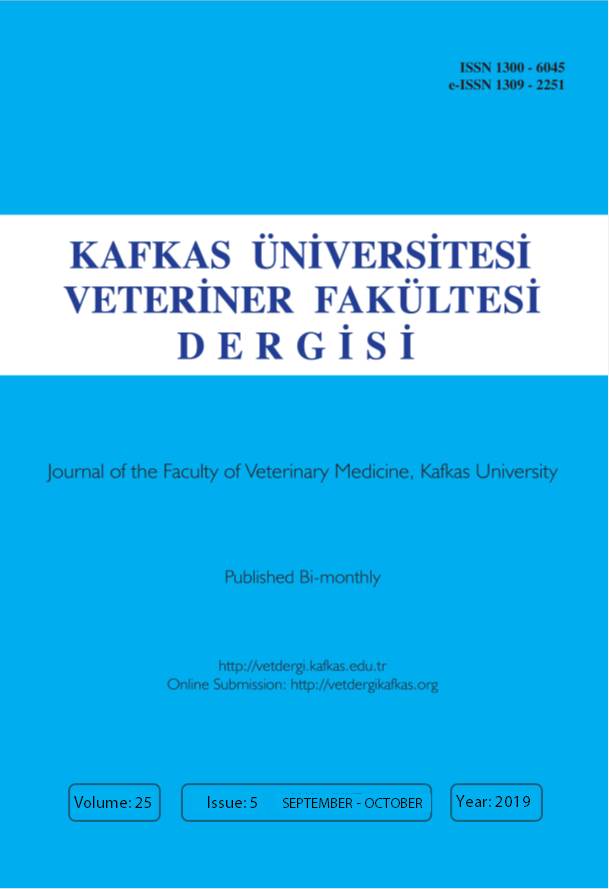
This journal is licensed under a Creative Commons Attribution-NonCommercial 4.0 International License
Kafkas Üniversitesi Veteriner Fakültesi Dergisi
2019 , Vol 25 , Issue 5
Comparison of Internal Transcribed Spacer Region Sequencing and Conventional Methods Used in the Identification of Fungi Isolated from Domestic Animals
1Ankara University, Faculty of Veterinary Medicine, Department of Microbiology, Şehit Ömer Halisdemir Bulvarı, TR- 06110 Dışkapı, Ankara - TURKEY
DOI :
10.9775/kvfd.2018.21506
The aim of this study was to compare gold standard conventional culture method and internal transcribed spacer (ITS) sequence-based
analysis in the identification of fungi isolated from domestic animals. A total of 35 animals (15 cat, 11 dog, 4 horse and 5 chickens) suspected
for fungal infection were examined. Of the 35 samples, 20 were found to be positive for fungal culture. Among positive samples 8 (40%)
were predominantly found to be dermatophyte species by conventional methods. The ITS regions (ITS1, ITS2 and complete ITS) of fungal
isolates were also amplified, sequenced and the results were compared with conventional culture method. The identification results of 18
(90%) fungal species were found to be compatible with both conventional culture and sequencing methods. Comparison of the results
demonstrated that, complete ITS regions gene sequencing could be used for the identification of medically important fungi rapidly. Since
the results of complete ITS regions gene sequencing were found to be compatible with the results of phenotypic identification, it can be
concluded that ITS regions gene sequencing of fungal isolates can be also used as a confirmative tool of conventional culture methods.
Keywords :
Dermatophyte, Fungi, ITS sequencing










